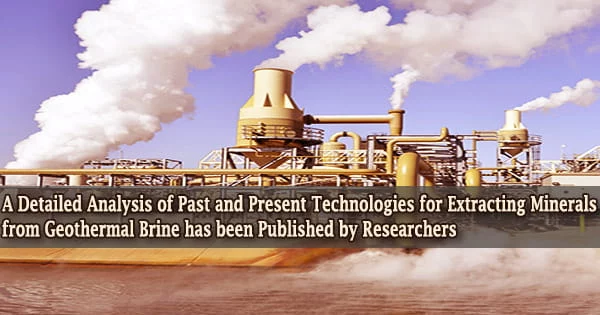How would you pick out the green marbles from a jar of many various hues if you just needed the green ones? What if the marbles were actually a container of glitter with sand, glue, and dirt mixed in?
That’s just scratching the surface of the brine blasted out of beneath California’s Salton Sea for geothermal energy generation.
Produced geothermal brine has traditionally been injected back underground in geothermal fields around the world, but it’s now been discovered that the brines produced at the Salton Sea geothermal field contain an enormous amount of lithium, a critical resource for low-carbon transportation and energy storage.
Lithium is in high demand since it is a key component of lithium-ion batteries. Currently, the United States produces very little lithium, and the majority of it is imported; however, this may change in the near future.
The Lawrence Berkeley National Laboratory (Berkeley Lab) of the U.S. Department of Energy recently published a detailed analysis of past and present technology for extracting minerals from geothermal brine.
The review, which was published in the journal Energies, covers a wide range of technologies for extracting lithium from brines and analyzes them. Geothermal brines in the Salton Sea region of California are projected to become a major domestic supply of lithium in the future, according to the assessment, but considerable technological obstacles must be solved.
We are dependent on lithium that’s extracted from the earth in other countries and it’s also processed overseas so we don’t have any significant domestic battery production. But there are potentially a lot of lithium resources in the United States that could be exploited. So, we’re looking at whether those resources can be extracted and used in a really environmentally friendly manner so that they’re truly ‘green’ lithium sources.
Will Stringfellow
“One of the major drivers for developing domestic lithium resources now is that we will need a lot of lithium in the future,” said Will Stringfellow, lead author of the paper.
“We are dependent on lithium that’s extracted from the earth in other countries and it’s also processed overseas so we don’t have any significant domestic battery production. But there are potentially a lot of lithium resources in the United States that could be exploited. So, we’re looking at whether those resources can be extracted and used in a really environmentally friendly manner so that they’re truly ‘green’ lithium sources.”
Lithium extraction from geothermal brines is likely to be particularly difficult. When the brine emerges from the ground, it is highly heated and includes a rich stew of dissolved minerals, including lithium.
“It comes out at over 100 degrees Celsius,” Stringfellow said. “So, you have to deal with the heat. And it’s very, very saline about 25% by weight. There’s a lot of salt, meaning a lot of sodium, a lot of chlorides. There’s also a lot of calcium and magnesium, and other things like iron and silicon. These are all materials that could potentially interfere with the extraction.”
According to Stringfellow, an expert in industrial waste treatment and management, the DOE (Department of Energy) is interested in both geothermal energy and the lithium supply chain.
“We were commissioned by DOE’s Geothermal Technologies Office to conduct an independent analysis of mineral extraction technology in the context of geothermal energy production,” he said.
“There have been previous reviews of individual fundamental processes, but this is, to our knowledge, the first comprehensive review that looked at the more applied-science side of the process.”
Stringfellow and co-author Patrick Dobson, the head of Berkeley Lab’s geothermal systems program, combed through published literature, industry, and government papers, and examined lithium extraction technique patents in depth.
Adsorption of lithium using inorganic sorbents is the most technologically advanced way of lithium extraction, however other promising technologies are also being researched.
The use of inorganic molecular sieve ion-exchange sorbents for lithium extraction from brines is reviewed in this paper, as well as the history and contemporary applications of this technology.
Dobson and Stringfellow are members of Berkeley Lab’s Lithium Resource Research and Innovation Center (LiRRIC), which was founded to develop science and technology for sustainable domestic lithium mining, refining, and materials synthesis for uses like batteries.
Recent research has focused on how to detect the chemical composition of hot brine in real-time without cooling it down, allowing for greater process control and increased lithium extraction efficiency.
They’re also doing techno-economic analyses with two Salton Sea firms, Berkshire Hathaway Energy and Controlled Thermal Resources, to investigate if lithium extraction technology can be made cost-competitive with existing lithium production methods. The California Energy Commission and the DOE’s Advanced Manufacturing Office are also supporting these projects.
“Berkeley Lab pioneered lithium battery technologies and is continuing to push the forefront of lithium battery innovation by using natural resources and interacting equitably with the communities in which these resources reside,” said Mike Whittaker, director of LiRRIC.
The work was supported by the Department of Energy’s Geothermal Technologies Office.





